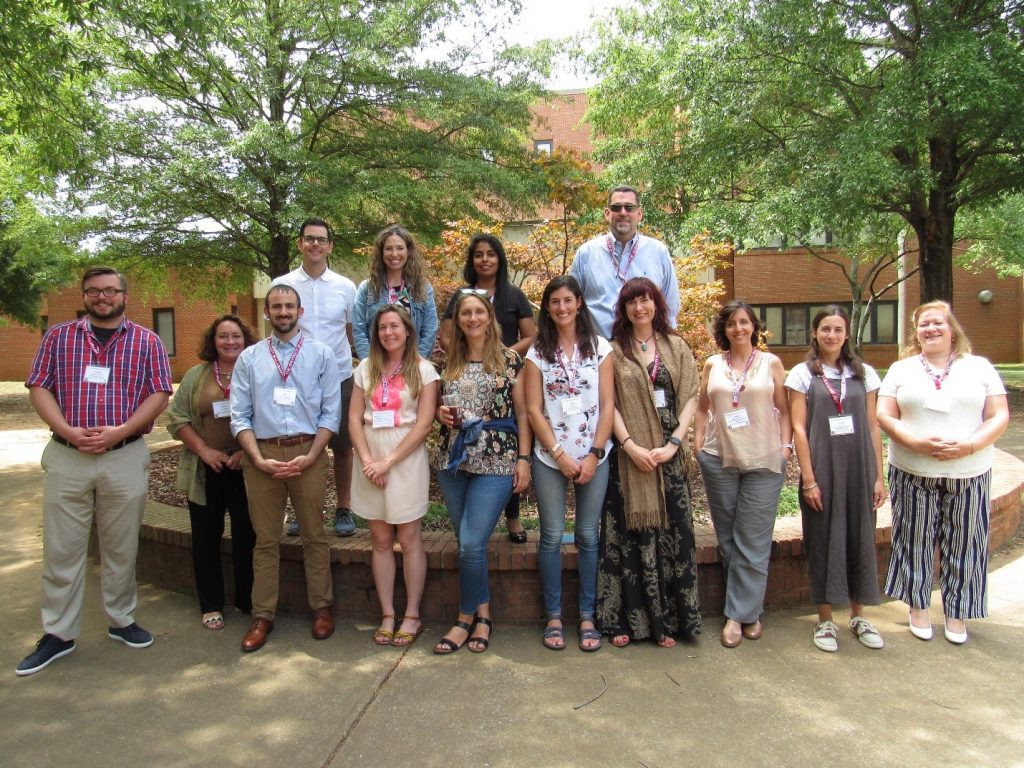A recent workshop co-hosted by the Alabama Water Institute aims to shed light on the growing problem of illicit supply networks, or ISNs. These networks pose numerous risks to national security, human and environmental health and economic prosperity.
According to researchers, established ISNs on the radar of law enforcement conduct activities such as trafficking cocaine, wild flora and animals. However, new ISNs are being discovered, such as the illegal mining of sand. These emerging networks don’t often attract attention from authorities, but they are the cause of many social and environmental damages. Since little is known about how these ISNs operate, how big they are and exactly how much socio-environmental destruction they create, combating them can be a daunting task.
To better understand and begin finding a solution to these problems, the workshop brought together 16 domestic and international researchers to The University of Alabama. It was the first of its kind to comparatively analyze these networks and pull together the limited knowledge about them.
“The breadth and diversity of expertise of the group allowed us to make connections that have yet to be recognized in mainstream knowledge or academic research,” said Dr. Nicholas Magliocca, lead workshop organizer and assistant professor in UA’s Department of Geography. “The challenge of finding commonalities and differences among the illicit cocaine, wildlife and sand trades made each of us look at our own ISNs of interest in a new light.”
Researchers have identified several of the societal and environmental harms from these networks. Deforestation and expansion of agrobusiness by way of money laundering and territorial control stems from trafficking cocaine. Wildlife trafficking is also associated with money laundering, but includes corruption and altered food web relationships. Illegal sand mining is linked to localized impacts on erosion, hydrology, groundwater recharge and illegal immigration.
Despite the differences in the unique problems they each create, they all share a mutual factor.
“All ISNs were associated with a suite of social harms ranging from violence, intimidation and corruption to exacerbation of existing rural problems such as addiction, domestic violence and food insecurity,” Magliocca said.
One of the takeaways from the workshop focuses on the relationship between ISNs and their disruptions. The primary interruptions of their operations occur through law enforcement, market factors and regulations. When the networks encounter these obstacles, they begin to seek out other ways to grow. Group members studied these changes and were able to develop a common conceptual framework among all ISNs, which will help determine their potential courses of action and create the means to fight them.
“The workshop enabled us a unique opportunity to delineate the spatialized similarities and differences between the nature of production and the nature of consumption for cocaine, wildlife and sand,” said Dr. Meredith Gore, associate professor in the Department of Fisheries and Wildlife at Michigan State University. “These process insights inform how comparative research on ISNs can enhance the capacity of individual research communities to leverage their science more effectively.”
The researchers believe the strategies from the workshop will help make people from all walks of life aware of these threats and how their adaptations to law enforcement play a central role in social and environmental damages.
“The workshop highlighted the power of interdisciplinary scholarship, with participates exchanging new ideas to synthesize insights on understanding and addressing the globally ubiquitous issue of ISNs,” said Dr. Neil Carter, assistant professor at the University of Michigan’s School for Environment and Sustainability.
The University of Alabama was represented by researchers affiliated with the Department of Geography, the Department of Criminology and Criminal Justice and the Alabama Transportation Institute. The workshop was co-sponsored by AWI, ATI and the College of Arts & Sciences.

